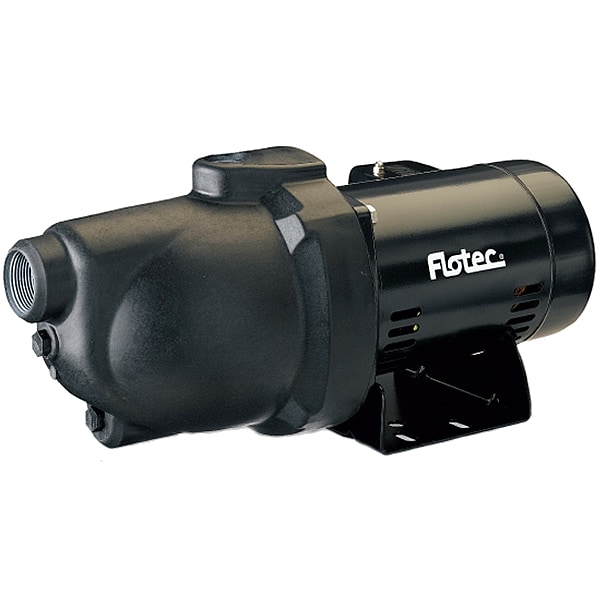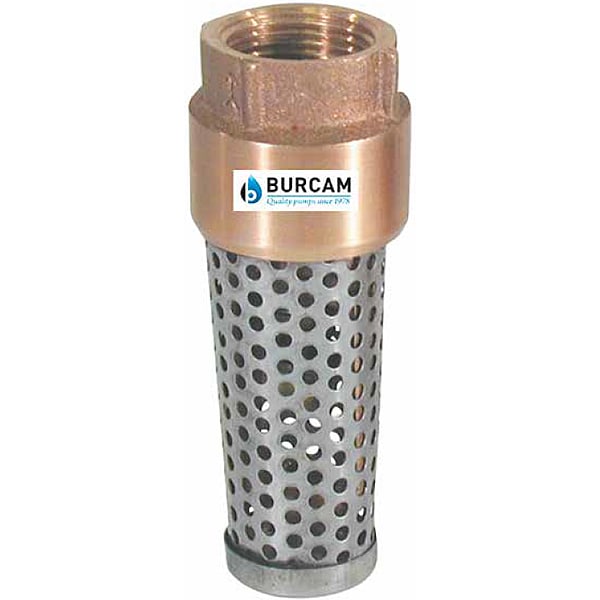
How to Prime a Well Pump
Well pumps have been around for centuries, but the days of using a bucket and rope are 'well' behind us.
Today, many homeowners refer to their modern well pump as just a water pump. Even though their applications are very different, well pumps and water pumps are primed in similar ways.
When referring to a well-pump, we simply mean any
pump that brings water to your home
that is drawn from a well, cistern, or another body of water. This can be a shallow-well pump, convertible jet pump, or a deep-well (submersible) well pump.
In this article, we'll teach you how to prime all types of well pumps.
How to Prime a Well Pump
Most well pumps are self-priming, meaning they only need to be primed at the time of installation,
assuming the pump, piping, valves, and fittings have all been installed correctly.
The term 'self-priming' is actually an industry term that describes the ability of a pump to create a partial vacuum by purging air from the intake hose and pump casing. Most pumps are self-priming by definition.
However, nearly all self-priming pumps require water to be added to the pump casing to start the priming process. As long as a check valve or foot valve is installed on the suction pipe and you never lose suction, you should not need to re-prime the pump again.
Steps to Prime a Shallow Well Pump:
- Turn the pump off and disconnect it from electrical outlets.
- Inspect the pump and connectors for damage or cracking.
- Locate and remove the prime plug, which is usually on the head of the pump.
- Open release valves if possible to prevent pressure buildup.
- Find and clean a lead-free hose by running water through it.
A hose is the most common and often the easiest way to reprime a pump, however, you can also use a large bottle or bucket too. As long as you have enough water to completely fill the pump housing, it should work out fine. - Use the hose to fill the pump casing with water until it comes out of the prime plug and relief valves (time will vary). Then, replace the prime plug.
The water source you use to fill the casing needs to match the application of the well pump. For example, if you use the well pump for drinking water, you need to use potable (clean) water to fill the tank. This applies to whatever you're using to hold the water (buckets, bottles, etc.) - Reconnect the pump and run it through a normal cycle. If it starts and stops normally, close the relief valves.
- Repeat Process as Needed.
Why Do You Need to Prime a Well Pump?
 A well pump needs to be primed in order to create the internal pressure necessary to draw water from your well or other water source and pump it to where you need it to go.
A well pump needs to be primed in order to create the internal pressure necessary to draw water from your well or other water source and pump it to where you need it to go.
Well pumps are usually classified as Submersible deep-well pumps and Non-submersible shallow-well pumps. Submersible well pumps do not need to be primed after installation because they
operate underwater in the well.
 When a shallow well pump
When a shallow well pump
(pictured right) is primed, water is flushed through the pump and the attached piping until every chamber and tube is filled flush with water. This is what creates the pressure needed to pump the water through your well pump system to wherever you need it in your home.
A primed pump with properly installed fittings, piping, and valves ensures that there aren't leaks in the system, and prevents backflow in your piping when the pump turns off. Check valves and foot valves are extremely important fittings in a well-pump system because they prevent water from flowing back into the well.

Do You Have to Prime a Submersible Well Pump?
Deep well pumps do not need to be primed after installation because they operate underwater and are submerged at all times.
Do You Need to Prime a Well Pump More Than Once?
Self-priming pumps rarely need to be primed more than once, however, there are circumstances where you might need to re-prime your well pump.
 For example, if a check valve or foot valve (pictured right) stops working, water can fall back into the cistern when the pump turns off, resulting in an air pocket created within the pipe. The next time the well pump turns on, it will be sputtering out the air as it struggles to draw water up again. If the motor doesn't burn out first, you will not be able to draw water until it is primed (filled with water) again.
For example, if a check valve or foot valve (pictured right) stops working, water can fall back into the cistern when the pump turns off, resulting in an air pocket created within the pipe. The next time the well pump turns on, it will be sputtering out the air as it struggles to draw water up again. If the motor doesn't burn out first, you will not be able to draw water until it is primed (filled with water) again.
How to Prime a Convertible Jet Pump
Convertible jet pumps operate similarly to shallow-well pumps, with the exception that they can be used to draw water from wells up to 90+ feet deep using a siphoning process known as the venturi effect.
 A convertible jet pump usually has 2 pipes: one used for water suction, and one for pushing water into a venturi loop, which acts as a siphon by pushing water around the piping loop and up toward your outlet valve. Using water, pressure, and the power of gravity, convertible jet pumps are able to draw water from much deeper wells than shallow-well pumps.
A convertible jet pump usually has 2 pipes: one used for water suction, and one for pushing water into a venturi loop, which acts as a siphon by pushing water around the piping loop and up toward your outlet valve. Using water, pressure, and the power of gravity, convertible jet pumps are able to draw water from much deeper wells than shallow-well pumps.
Priming a convertible jet pump follows the same basic process as priming a shallow-well pump as detailed above with the exception that BOTH suction pipes must be filled with water as well as the pump housing.
Troubleshooting Primed Well Pumps
If your pump is abnormally cycling or isn't drawing water at the pressure or volume you need, the first step is to check and see if the pump is fully primed (filled to the top with water). Although it's not likely, it's possible that non-submersible well pumps can lose their prime as a result of other issues.
Common Reasons a Pump Needs to be Reprimed:
- a bad foot valve that needs to be replaced
- malfunctioning check valve(s)
- leaking pipes or fittings
- un-glued fittings that allow air or water to leak
- loose connectors or fasteners
- broken seals
- the piping has a blockage
- the well has run dry
- the pump is damaged
The smallest of leaks in your suction piping will wreak havoc with your system. It's just like how trying to suck on a straw with a pinhole will drive you crazy. For this reason, we also recommend
checking all threaded fittings for air leaks or at least making sure plumber's tape is used on all the fittings on the suction side to help prevent leaks.
How to Fix Low Water Pressure
 If you've determined that the well pump does not need to be reprimed, and all of the above have been checked, the next thing to do is check the holding (pressure) tank. If your well pump does not have a pressure gauge, it may be useful to have an external pressure gauge installed at the pump or at the outlet to monitor water pressure levels.
If you've determined that the well pump does not need to be reprimed, and all of the above have been checked, the next thing to do is check the holding (pressure) tank. If your well pump does not have a pressure gauge, it may be useful to have an external pressure gauge installed at the pump or at the outlet to monitor water pressure levels.
Check the gauges on your pressure tank and monitor the changes. For example, if your pressure tank is meant to fill until it yields 40 PSI, and start your well pump when it drops below 20 PSI, monitor how often pressure is falling below the threshold to help pinpoint when (and where) water pressure is being lost.
If you have strong water pressure at some fixtures but not at others, there may be a clog or reduction somewhere else within the piping in your home's water lines. If everything else is working properly, you can use a booster pump to increase water pressure to your fixtures.
Next Steps
Whether you're priming your well pump the first time, or you've been scratching your head about whether it's time for a new pump, troubleshooting can help you determine whether the problem is salvageable, or if it's better to invest in a new well pump.
If you think you'll need a new well pump, check out our expert recommendations for the best well pumps, as voted by actual customers who purchased and used the pumps they rated.
![]() NEXT: Shop The Best Well Pumps of the Year
NEXT: Shop The Best Well Pumps of the Year





